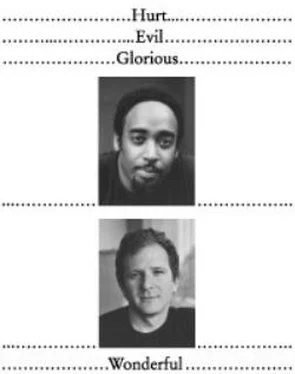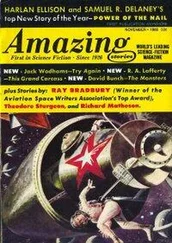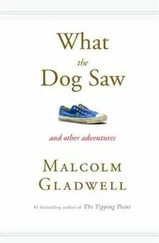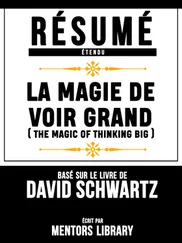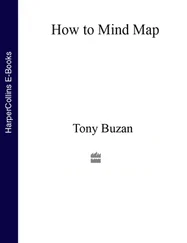Malcolm Gladwell - Blink - The Power of Thinking Without Thinking
Здесь есть возможность читать онлайн «Malcolm Gladwell - Blink - The Power of Thinking Without Thinking» весь текст электронной книги совершенно бесплатно (целиком полную версию без сокращений). В некоторых случаях можно слушать аудио, скачать через торрент в формате fb2 и присутствует краткое содержание. Жанр: Культурология, Психология, на английском языке. Описание произведения, (предисловие) а так же отзывы посетителей доступны на портале библиотеки ЛибКат.
- Название:Blink: The Power of Thinking Without Thinking
- Автор:
- Жанр:
- Год:неизвестен
- ISBN:нет данных
- Рейтинг книги:3 / 5. Голосов: 1
-
Избранное:Добавить в избранное
- Отзывы:
-
Ваша оценка:
- 60
- 1
- 2
- 3
- 4
- 5
Blink: The Power of Thinking Without Thinking: краткое содержание, описание и аннотация
Предлагаем к чтению аннотацию, описание, краткое содержание или предисловие (зависит от того, что написал сам автор книги «Blink: The Power of Thinking Without Thinking»). Если вы не нашли необходимую информацию о книге — напишите в комментариях, мы постараемся отыскать её.
Blink: The Power of Thinking Without Thinking — читать онлайн бесплатно полную книгу (весь текст) целиком
Ниже представлен текст книги, разбитый по страницам. Система сохранения места последней прочитанной страницы, позволяет с удобством читать онлайн бесплатно книгу «Blink: The Power of Thinking Without Thinking», без необходимости каждый раз заново искать на чём Вы остановились. Поставьте закладку, и сможете в любой момент перейти на страницу, на которой закончили чтение.
Интервал:
Закладка:
When each of those action units had been mastered, Ekman and Friesen began working action units in combination, layering one movement on top of another. The entire process took seven years. “There are three hundred combinations of two muscles,” Ekman says. “If you add in a third, you get over four thousand. We took it up to five muscles, which is over ten thousand visible facial configurations.” Most of those ten thousand facial expressions don’t mean anything, of course. They are the kind of nonsense faces that children make. But, by working through each action-unit combination, Ekman and Friesen identified about three thousand that did seem to mean something, until they had catalogued the essential repertoire of human facial displays of emotion.
Paul Ekman is now in his sixties. He is clean-shaven, with closely set eyes and thick, prominent eyebrows, and although he is of medium build, he seems much larger: there is something stubborn and substantial in his demeanor. He grew up in Newark, New Jersey, the son of a pediatrician, and entered the University of Chicago at fifteen. He speaks deliberately. Before he laughs, he pauses slightly, as if waiting for permission. He is the sort who makes lists and numbers his arguments. His academic writing has an orderly logic to it; by the end of an Ekman essay, each stray objection and problem has been gathered up and catalogued. Since the mid-1960s, he has been working out of a ramshackle Victorian townhouse at the University of California at San Francisco, where he holds a professorship. When I met Ekman, he sat in his office and began running through the action-unit configurations he had learned so long ago. He leaned forward slightly, placing his hands on his knees. On the wall behind him were photographs of his two heroes, Tomkins and Charles Darwin. “Everybody can do action unit four,” he began. He lowered his brow, using his depressor glabellae, depressor supercilii, and corrugator. “Almost everyone can do A.U. nine.” He wrinkled his nose, using his levator labii superioris alaeque nasi. “Everybody can do five.” He contracted his levator palpebrae superioris, raising his upper eyelid.
I was trying to follow along with him, and he looked up at me. “You’ve got a very good five,” he said generously. “The more deeply set your eyes are, the harder it is to see the five. Then there’s seven.” He squinted. “Twelve.” He flashed a smile, activating the zygomatic major. The inner parts of his eyebrows shot up. “That’s A.U. one—distress, anguish.” Then he used his frontalis, pars lateralis, to raise the outer half of his eyebrows. “That’s A.U. two. It’s also very hard, but it’s worthless. It’s not part of anything except Kabuki theater. Twenty-three is one of my favorites. It’s the narrowing of the red margin of the lips. Very reliable anger sign. It’s very hard to do voluntarily.” He narrowed his lips. “Moving one ear at a time is still one of the hardest things to do. I have to really concentrate. It takes everything I’ve got.” He laughed. “This is something my daughter always wanted me to do for her friends. Here we go.” He wiggled his left ear, then his right ear. Ekman does not appear to have a particularly expressive face. He has the demeanor of a psychoanalyst, watchful and impassive, and his ability to transform his face so easily and quickly was astonishing. “There is one I can’t do,” he went on. “It’s A.U. thirty-nine. Fortunately, one of my postdocs can do it. A.U. thirty-eight is dilating the nostrils. Thirty-nine is the opposite. It’s the muscle that pulls them down.” He shook his head and looked at me again. “Ooh! You’ve got a fantastic thirty-nine. That’s one of the best I’ve ever seen. It’s genetic. There should be other members of your family who have this heretofore unknown talent. You’ve got it, you’ve got it.” He laughed again. “You’re in a position to flash it at people. See, you should try that in a singles bar!”
Ekman then began to layer one action unit on top of another, in order to compose the more complicated facial expressions that we generally recognize as emotions. Happiness, for instance, is essentially A.U. six and twelve—contracting the muscles that raise the cheek (orbicularis oculi, pars orbitalis) in combination with the zygomatic major, which pulls up the corners of the lips. Fear is A.U. one, two, and four, or, more fully, one, two, four, five, and twenty, with or without action units twenty-five, twenty-six, or twenty-seven. That is: the inner brow raiser (frontalis, pars medialis) plus the outer brow raiser (frontalis, pars lateralis) plus the brow-lowering depressor supercilii plus the levator palpebrae superioris (which raises the upper lid) plus the risorius (which stretches the lips) plus the parting of the lips (depressor labii) plus the masseter (which drops the jaw). Disgust? That’s mostly A.U. nine, the wrinkling of the nose (levator labii superioris alaeque nasi), but it can sometimes be ten, and in either case it may be combined with A.U. fifteen or sixteen or seventeen.
Ekman and Friesen ultimately assembled all these combinations—and the rules for reading and interpreting them—into the Facial Action Coding System, or FACS, and wrote them up in a five-hundred-page document. It is a strangely riveting work, full of such details as the possible movements of the lips (elongate, de-elongate, narrow, widen, flatten, protrude, tighten, and stretch); the four different changes of the skin between the eyes and the cheeks (bulges, bags, pouches, and lines); and the critical distinctions between infraorbital furrows and the nasolabial furrow. John Gottman, whose research on marriage I wrote about in chapter 1, has collaborated with Ekman for years and uses the principles of FACS in analyzing the emotional states of couples. Other researchers have employed Ekman’s system to study everything from schizophrenia to heart disease; it has even been put to use by computer animators at Pixar ( Toy Story ) and DreamWorks ( Shrek ). FACS takes weeks to master in its entirety, and only five hundred people around the world have been certified to use it in research. But those who have mastered it gain an extraordinary level of insight into the messages we send each other when we look into one another’s eyes.
Ekman recalled the first time he saw Bill Clinton, during the 1992 Democratic primaries. “I was watching his facial expressions, and I said to my wife, ‘This is Peck’s Bad Boy,’” Ekman said. “This is a guy who wants to be caught with his hand in the cookie jar and have us love him for it anyway. There was this expression that’s one of his favorites. It’s that hand-in-the-cookie-jar, love-me-Mommy-because-I’m-a-rascal look. It’s A.U. twelve, fifteen, seventeen, and twenty-four, with an eye roll.” Ekman paused, then reconstructed that particular sequence of expressions on his face. He contracted his zygomatic major, A.U. twelve, in a classic smile, then tugged the corners of his lips down with his triangularis, A.U. fifteen. He flexed the mentalis, A.U. seventeen, which raises the chin, slightly pressed his lips together in A.U. twenty-four, and finally rolled his eyes—and it was as if Slick Willie himself were suddenly in the room.
“I knew someone who was on Clinton’s communications staff. So I contacted him. I said, ‘Look, Clinton’s got this way of rolling his eyes along with a certain expression, and what it conveys is “I’m a bad boy.” I don’t think it’s a good thing. I could teach him how not to do that in two to three hours.’ And he said, ‘Well, we can’t take the risk that he’s known to be seeing an expert on lying.’” Ekman’s voice trailed off. It was clear that he rather liked Clinton and that he wanted Clinton’s expression to have been no more than a meaningless facial tic. Ekman shrugged. “Unfortunately, I guess, he needed to get caught—and he got caught.”
Читать дальшеИнтервал:
Закладка:
Похожие книги на «Blink: The Power of Thinking Without Thinking»
Представляем Вашему вниманию похожие книги на «Blink: The Power of Thinking Without Thinking» списком для выбора. Мы отобрали схожую по названию и смыслу литературу в надежде предоставить читателям больше вариантов отыскать новые, интересные, ещё непрочитанные произведения.
Обсуждение, отзывы о книге «Blink: The Power of Thinking Without Thinking» и просто собственные мнения читателей. Оставьте ваши комментарии, напишите, что Вы думаете о произведении, его смысле или главных героях. Укажите что конкретно понравилось, а что нет, и почему Вы так считаете.
